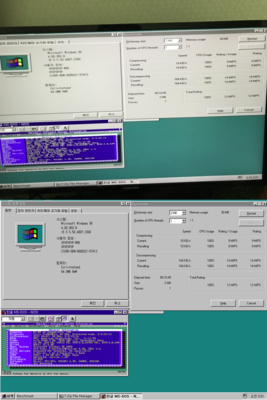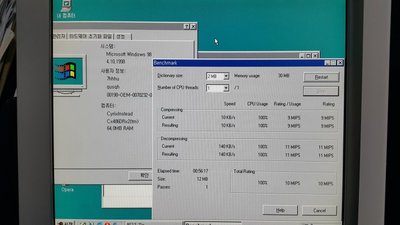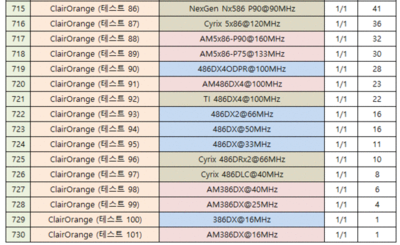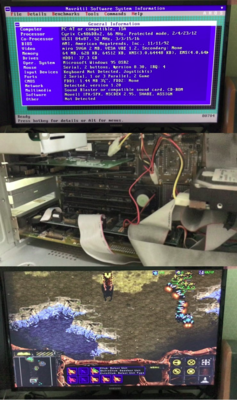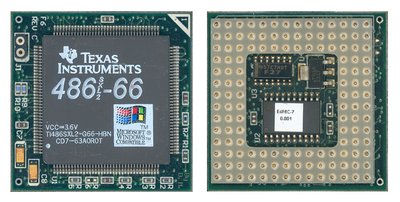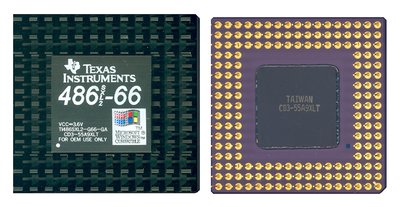First post, by skv400
- Rank
- Newbie
My 386 system is equipped with a 486DRx2-66MHz CPU.
But because the heat is so much, I was worried and wanted to install the CPU cooler.
The 386 CPU socket had no latch, and the cooler support for 386 CPU was hard to find.
So I used two VGA Memory's Heatsink.
Heatsink and CPU were bonded with a 3M heat conduction tape.
Then, a 40mm fan was mounted on the heat sink.
a result is, the temperature was maintained at a satisfactory level.
When I ran the 7zip Benchmark, I recorded 12MIPS.
This is the record before installing the cooler.
Compared to the 10MIPS before the cooler, 12MIPS after the cooler has been improved by 20%.
This is my 7-zip Benchmark chart. 12MIPS is better than Intel 486DX-33MHz.
The reason for the 486DX 50MHz and 486DX2 66MHz results is the same because 50MHz is the DX-50 of FSB 50.
It is not DX2-50.
All CPUs in the list except nx586 have been tested in the same environment.
because Nx586 requires a dedicated motherboard.
And I played StarCraft on this computer.
Full spec is
CPU : Cyrix 486DRx2 66MHz (33x2) with Cyrix utility
FPU : ULSi Math-Co DX-2 66MHz (33x2)
RAM : 64MB FPM 60ns (16MB x4)
M/B : Dataexpert OPTI 495SLC 3/486 VLB Motherboard
I/O : E-IDE VLB I/O
HDD : Seagate Baraccuda ATA IV 40GB E-IDE w/Ontrack HDD Manager software
VGA : S3 Vision868 VLB 2MB
Sound Card : ESS 1868 PnP ISA
Play is here -> https://youtu.be/JX3-duN7W_I
Youtube Channel : https://www.youtube.com/channel/UCeaVPa3VMe9nUGDtFtVzvDQ

